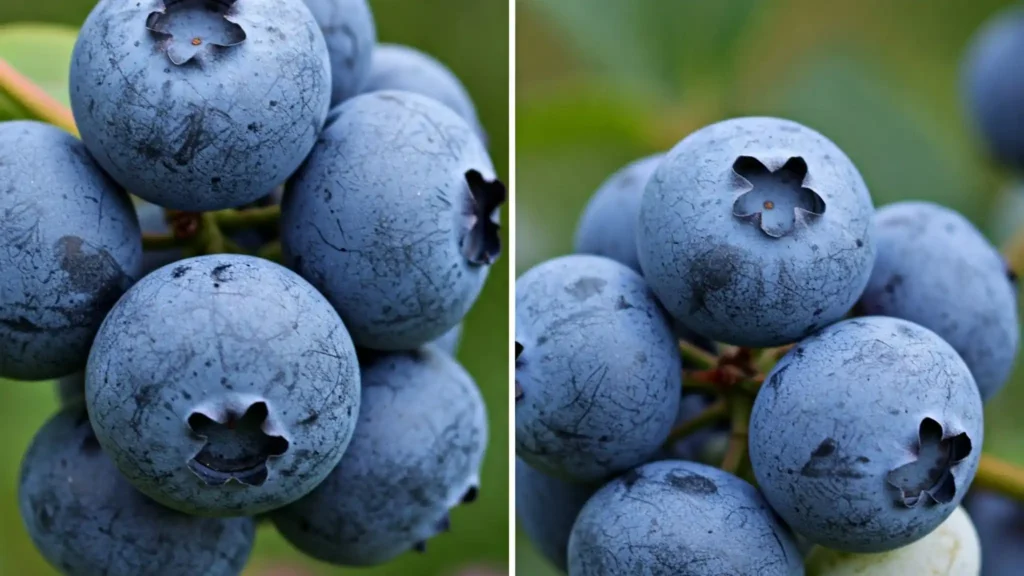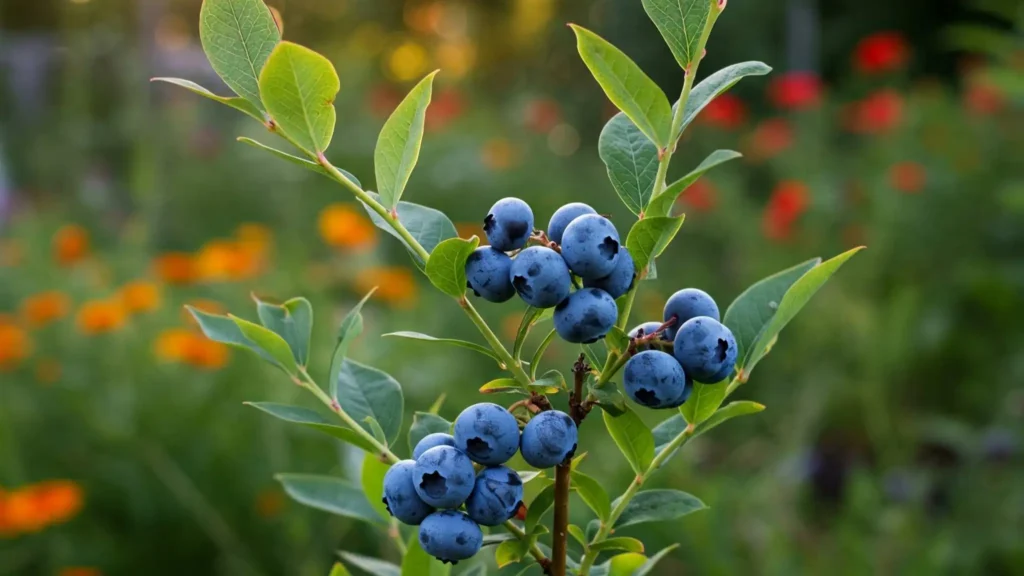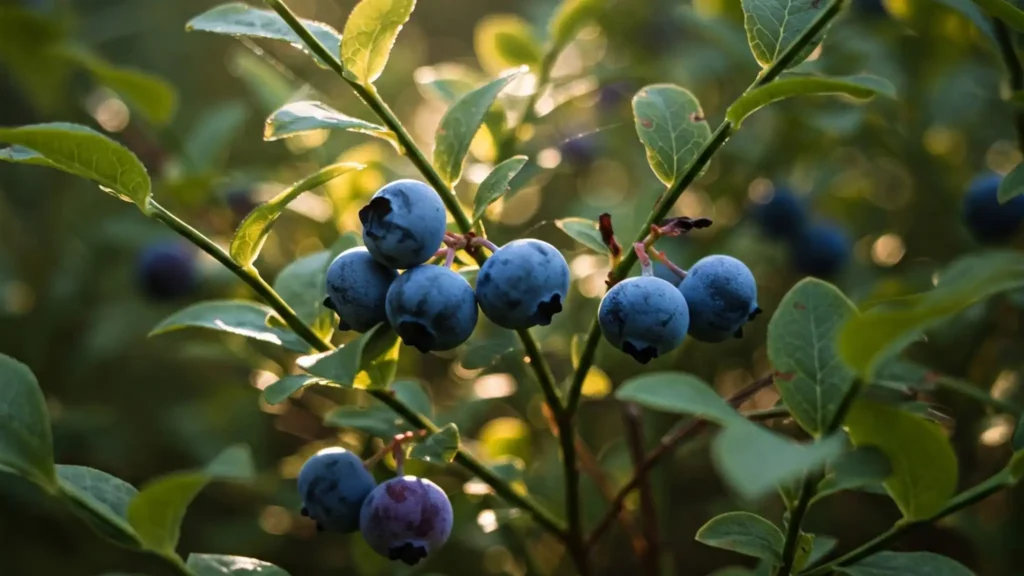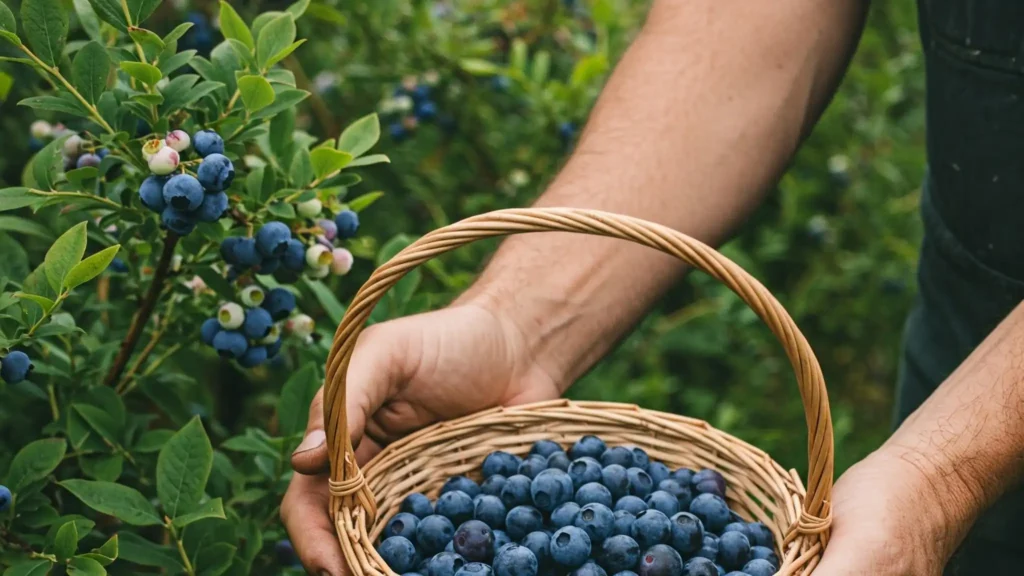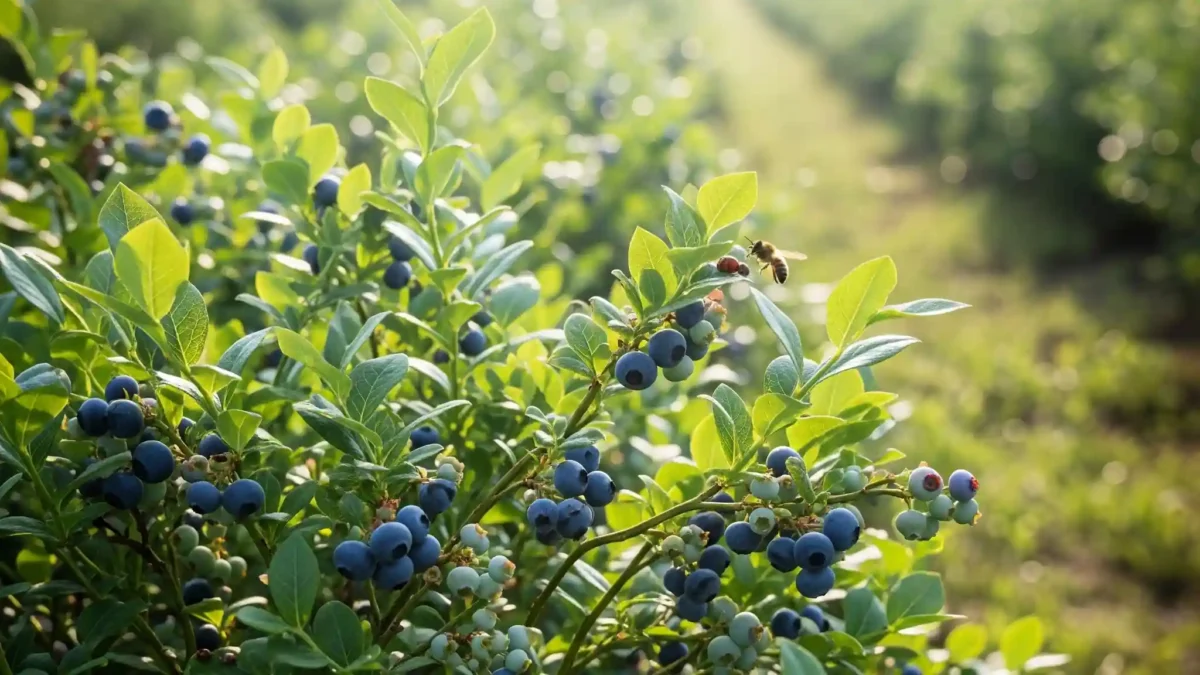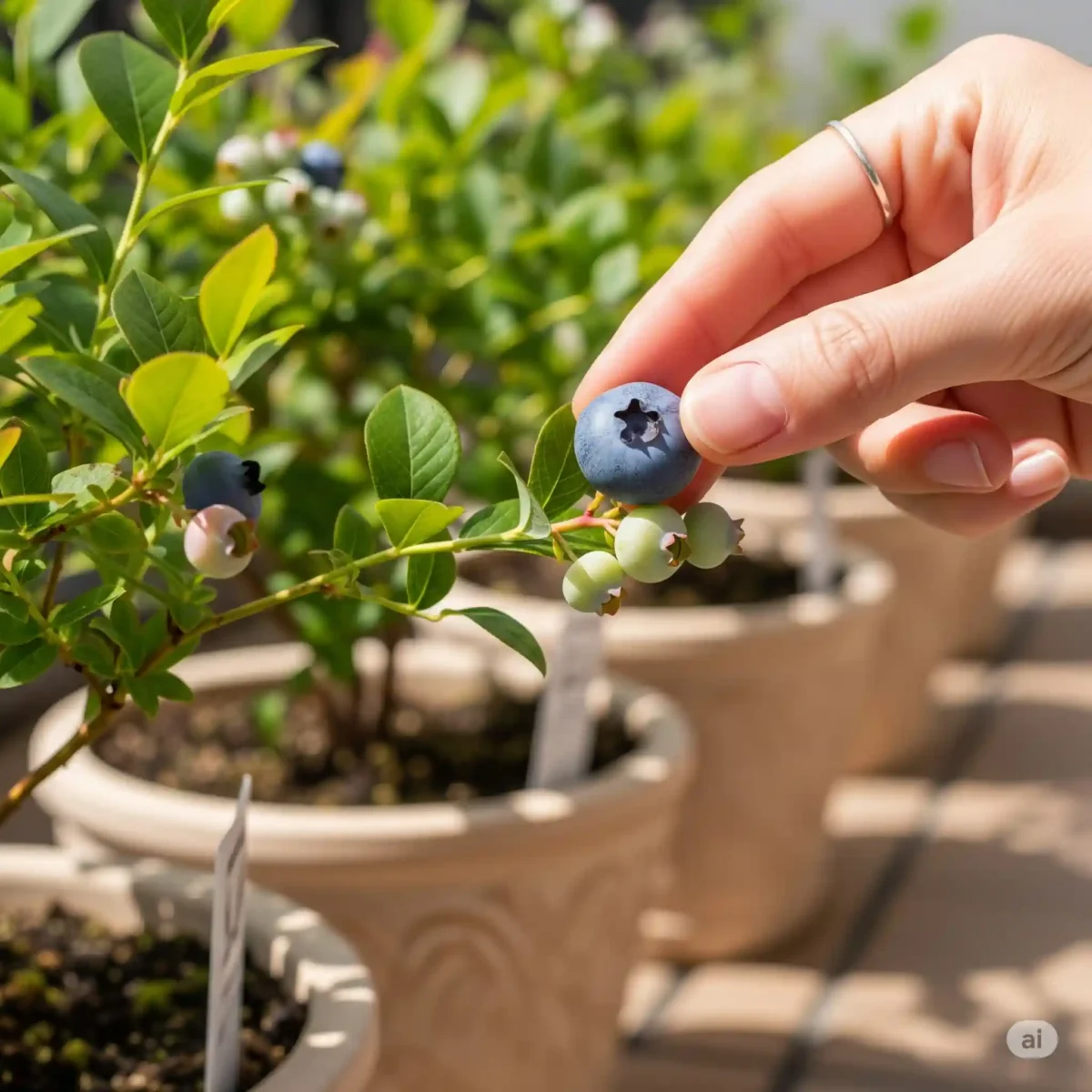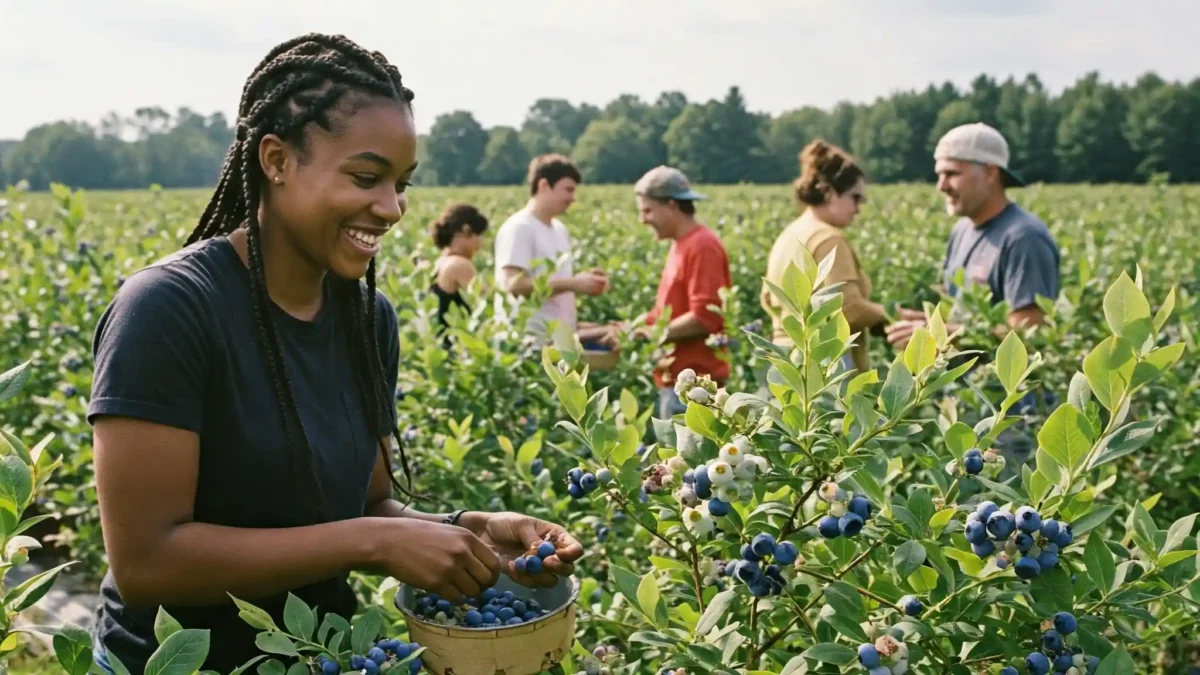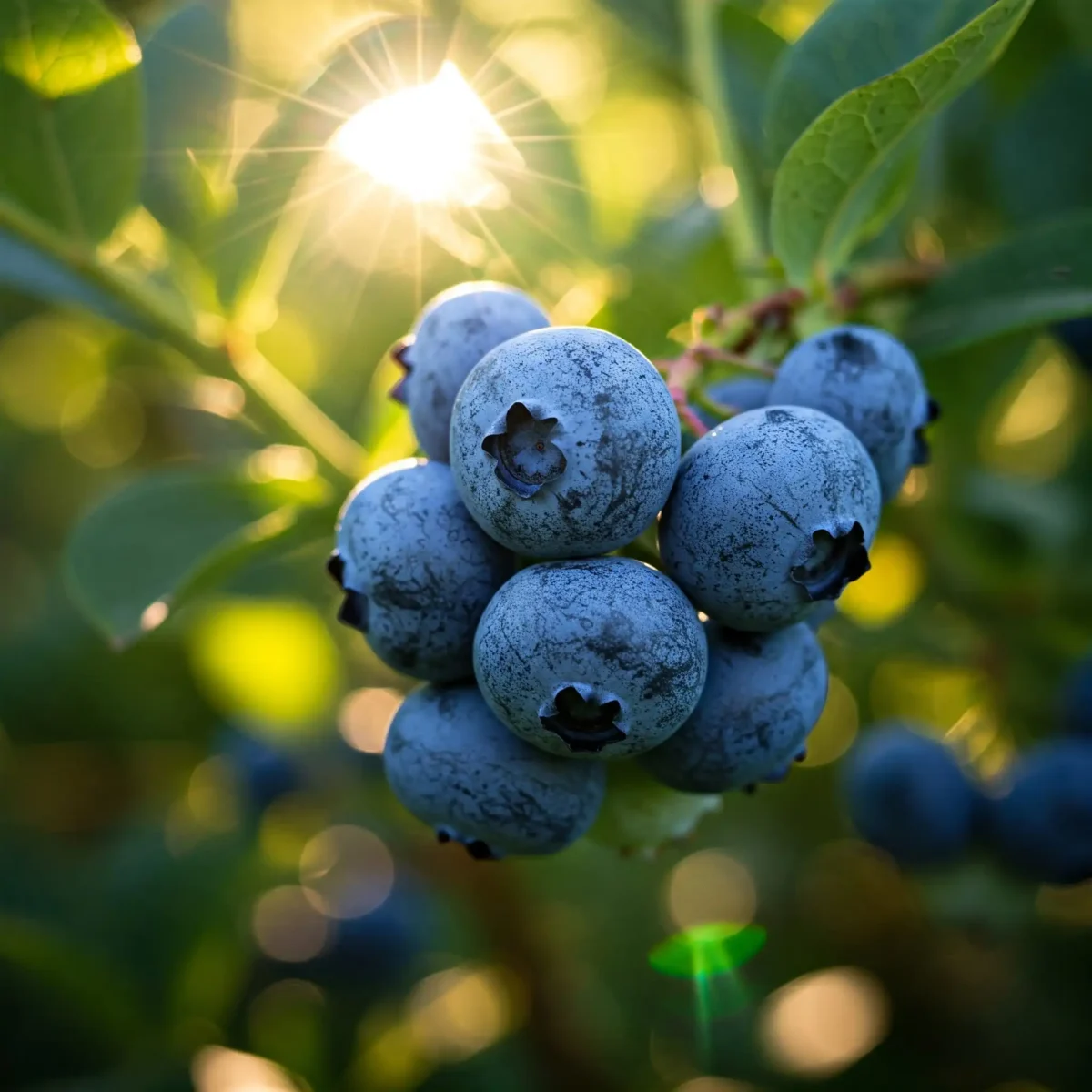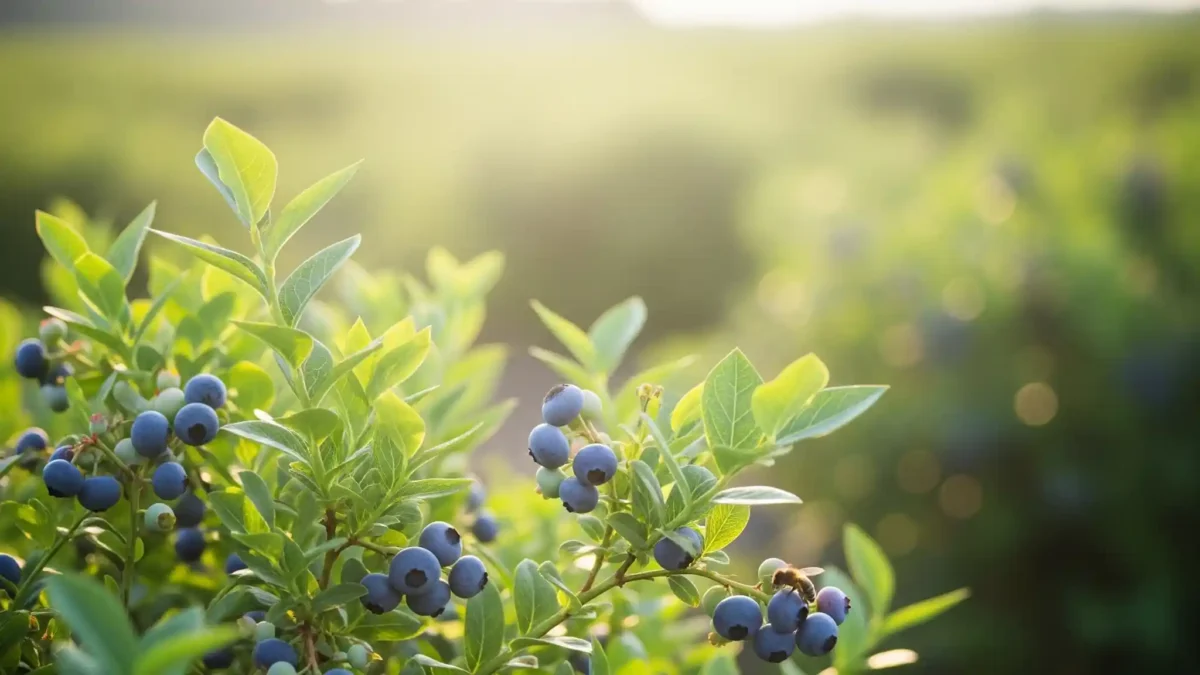Highbush or Lowbush Blueberries? The Surprising Answer…
Dreaming of a summer bursting with the sweet, sour taste of fresh blueberries taken straight from your own yard? A gardener’s delight! You might be wondering, though, “Highbush vs. lowbush blueberries – which one should I plant?” given the variety of blueberries now on offer. The good news is that while they have important differences, both can reward you with great fruit. Finding the correct one is easy; keep reading.
Highbush blueberries are the convenience and yield champions generally speaking. Their taller height makes selecting easy, and they create those plump, juicy berries found in most supermarkets. Lowbush blueberries, on the other hand, are the tough survivors; they thrive in colder climates where highbush kinds might find difficulty. In a smaller package, they present a more concentrated, “wild” taste. Still, your particular climate, space, and taste preferences will ultimately determine whether highbush or lowbush blueberries are the better fit for you.
Overview of the Guide
We will explore the world of lowbush and highbush blueberries in great detail in this book.
- From size and growth patterns to flavor profiles and care needs, we will discuss their particular qualities.
- By the end, you will have all the knowledge you need to boldly choose the ideal blueberry variety to flourish in your garden and offer you years of mouthwatering crops.
Let us begin.
What are Highbush Blueberries?
The most often grown variety of blueberries, highbush blueberries are rightfully popular! With an upright growth pattern, these deciduous shrubs are renowned for their amazing scale—they reach a mature height of 6 to 12 feet (and occasionally even taller!). Their lowbush cousins are far smaller than this, which makes harvesting simpler and their more significant presence in the garden scene more evident. Usually a vivid green, their leaves create lovely autumnal red and orange tones that add ornamental value outside the fruiting season.
Varieties of Highbush
Regarding varieties, almost every taste is catered for by a highbush blueberry. Among the often used options are:
- One mid-season variety with constant high yields and disease resistance is bluecrop. [ Link to a specifically Bluecrop article here, if one exists ]
- Duke: An early-season variety yielding big, firm berries with a subdued, sweet taste. [ Link to a specifically Duke article here, if one exists ]
- Patriot: Producing big, flavorful berries and adaptable to a range of soil conditions, this cold-hardy variant [ Link to, if available, a focused Patriot article here ]
Berry Description
Usually big, plump, and juicy, the berries themselves taste classic sweet blueberry. They are thus ideal for fresh eating, baking, freezing, and preservation. Additionally well-known for their amazing output are highbush blueberries. Depending on the variety and growing conditions, a mature, well-cared-for plant can generate anywhere from five to twenty pounds of berries annually.
Growing Conditions
Although some varieties can withstand somewhat warmer or colder climates, highbush blueberries excel in USDA Hardiness Zones 4-7. They call for acidic soil with a pH between 4.5 and 5.5 and full sun—at least six hours of direct sunlight every day.
Advantages and Disadvantages
Growing highbush blueberries has mostly benefits in terms of simplicity of picking (because of their height), great fruit yields, and pleasing plant appearance itself. In terms of soil acidity and climate needs, they can, nevertheless, be more demanding than lowbush varieties. To really thrive, they require consistent moisture and close attention to soil pH. Should you absent that they might not create any fruits. Still, they remain the most often chosen option.
Top Highbush Blueberry Varieties
Prized for their large, juicy berries, high yields, and rather simple harvesting, highbush blueberries are the most often used variety for home gardens and commercial production. Given so many options, deciding which one is best can seem intimidating. Categorized by ripening time, this guide lists some of the best highbush blueberry choices to help you choose the ideal varieties for a continuous harvest:
Early Season:
- Duke: An early-season producer of consistency and dependability. Duke provides big, firm berries with a subdued sweet taste. Perfect for processing or big batches of fresh eating, it is well-known for its concentrated ripening period—that is, a lot of the fruit ripens at once. Duke also is rather adaptable and cold-hardy.
- As the name implies, Earliblue is among the first ripening varieties. The berries taste sweet and aromatic, are medium-sized, light blue. Although not as high-yielding as some other varieties, its earliness adds great value to the blueberry patch.
Middle Season:
- Widely regarded as the industry standard for mid-season blueberries, Bluecrop is well-known for its consistent high yields, disease resistance, and flexibility to a variety of growing environments. The berries taste classic, sweet blueberry and are big, firm. For every home garden, a dependable and efficient choice.
- Blueray: Beautiful, big, very flavorful light-blue berries.
- Berkeley: Along with a light-blue hue and delicious sweetness, this varietal boasts one of the biggest berries.
Late Season:
- One of the newest ripening varieties, Elliott stretches the blueberry harvest far into late summer. With storage, the somewhat tart taste of the medium-sized, firm berries gets more pronounced. Elliott is cold-hardy and rather productive.
- Darrow, which boasts some of the largest berries among all kinds, is not only visually striking but also strongly zesty in taste.
Highbush Blueberry Variety Comparison Table:
| Variety | Ripening Time | Berry Size | Flavor Profile | Hardiness Zones |
| Duke | Early | Large | Mild, sweet | 4-7 |
| Earliblue | Early | Medium | Sweet, aromatic | 4-7 |
| Bluecrop | Mid | Large | Classic, sweet | 4-7 |
| Blueray | Mid | Large | Outstanding, sweet | 4-7 |
| Berkeley | Mid | Extra Large | Sweet | 4-7 |
| Elliott | Late | Medium | Slightly tart | 4-7 |
| Darrow | Late | Extra Large | Robust, zesty | 4-7 |
What are Lowbush Blueberries?
Sometimes referred to as “wild blueberries,” lowbush blueberries offer a quite different taste than their highbush counterparts. Usually only 6 to 24 inches tall, these little low-growing shrubs spread outward to create a dense, carpet-like groundcover. For edging paths, filling in rock gardens, or just establishing a lovely and useful groundcover in places where bigger shrubs would not flourish, this makes them a great choice. In the autumn, their smaller, generally glossy leaves turn brilliant tones of red and bronze.
Varieties of Lowbush
There are several lowbush blueberry varieties, each with distinctive qualities. Among the rather common choices are:
- Top Hat: A dwarf variant ideal for containers that, for their size generates an unexpected volume of delicious berries.
- Rubel: Perfect for baking, this heirloom variety is distinguished by its strongly flavored tiny berries.
- Natural Varieties: Many lowbush blueberries, valued for their hardiness and strong taste, are simply selections from wild populations. [Link to a basic “Wild Blueberries” article here, if one exists]
Berry Description
Lowbush blueberries often have a more concentrated, strong, and occasionally slightly sour taste, while the berries are smaller than highbush types. Many people characterize its taste as “truer,” or “wilder,” blueberry. For jams, jellies, muffins, and pies they are absolutely ideal. Lowbush plants can create dense mats over time, so producing a significant overall harvest even if their yield per plant is less than that of highbush blueberries given enough space.
Growing Conditions
Particularly cold-hardy, lowbush blueberries grow in USDA Hardiness Zones 3–7; some varieties even withstand Zone 2! For northern climate gardeners where highbush blueberries might find difficulty surviving, this makes them a great option. Like highbush varieties, they also want full sun and acidic soil.
Advantages and Disadvantages
Growing lowbush blueberries has many benefits, chief among them their low maintenance needs, great cold hardiness, capacity to be a lovely groundcover, and very strong flavor. The main drawbacks are the smaller size of the berries and the fact that picking them requires bending down or kneeling, so consuming some time.
Best Varieties of Lowbush Blueberries
Although “wild” lowbush blueberries are typically taken from natural stands, for home gardeners several cultivated varieties provide enhanced yields, taste, and consistency. Your particular needs and tastes will determine the appropriate variety, but here are some of the best lowbush blueberry choices to take into account together with a useful comparison table:
Rubel
For a reason this heirloom variety is a classic. Though tiny, rubel blueberries have a strong, sweet-tart taste that is highly valued in baking—especially in pies and muffins. Forming a dense, low-growing mat, the plants are vigorous and productive. Since Rubel is quite cold-hardy, northern gardens would find it to be a great choice. Its good storage quality is another well-known feature.
Top Hat
Reaching only roughly 12 to 18 inches in height and width, this appropriately named variation is a real dwarf. Perfect for small areas, container gardening, or as an edging plant is this one. Top Hat, for its small scale, generates an unexpectedly good yield of medium-sized, flavorful berries. It’s also rather decorative, with lovely spring white blossoms and foliage.
Brunswick
Another wonderful example of selections from wild populations is Brunswick. This variety is quite adaptable and highly fruitful.
St. Cloud
St. Cloud requires still another blueberry for pollination. For best yields, plant this variety next to Northblue and Northsky.
Northblue
Northblue is a hybrid cross between a lowbush and a highbush combining great fruit with vigor.
Northsky
Characteristically both highbush and lowbush, this half-high blueberry results from a cross between both.
Northcountry
Also half-high, this variety combines excellent taste with cold hardiness.
Lowbush Blueberry Variety Comparison Table:
| Variety | Height (inches) | Berry Size | Flavor Profile | Hardiness Zones |
| Rubel | 18-24 | Small | Intense, sweet-tart | 3-7 |
| Top Hat | 12-18 | Medium | Sweet, flavorful | 3-7 |
| Brunswick | 6-24 | Small | Sweet | 2-6 |
| St. Cloud | 18-24 | Medium | Sweet | 3-7 |
| Northblue | 20-48 | Large | Sweet | 3-7 |
| Northsky | 18-24 | Small | Sweet | 3-7 |
| Northcountry | 20-30 | Medium | Sweet, mild | 3-7 |
Selecting a Blueberry Variety Fit for Your Requirements
Knowing the fundamentals of lowbush and highbush blueberries now will help you choose which variety best suits your tastes and garden size. Let us dissect it using a straight comparison and some particular scenarios:
Highbush vs. Lowbush Blueberries: a brief comparison here
| Characteristic | Highbush | Lowbush |
| Height | 6-12 feet (or more) | 6-24 inches |
| Yield | High (5-20 lbs per plant) | Lower per plant, but can form dense mats |
| Taste | Sweet, juicy, classic blueberry flavor | More intense, “wild” flavor, sometimes tart |
| Hardiness Zones | Generally 4-7 | 3-7 (some to Zone 2) |
| Maintenance | More demanding (soil pH, pruning) | Lower maintenance |
| Ease of Picking | Easy (standing height) | More difficult (bending/kneeling) |
| Berry Size | Larger | Smaller |
Recommendations Based on Scenarios:
Think through these situations to guide your decision-making:
- Living in a cold environment (Zone 3-5) lowbush blueberries are your best choice. Their great cold-hardiness will guarantee their survival and growth even in demanding winters.
- Highbush blueberries are the obvious winner if you wish the best possible yield. One mature plant can generate rather a lot of fruit.
- Lowbush blueberries might be a great choice if you have limited space since they can be grown in containers or as a groundcover. Although they can be grown in containers, highbush blueberries call for rather big pots.
- If you give ease of picking top priority, highbush blueberries are far simpler to gather since you can pick them straight forward.
- Lowbush blueberries often have a more concentrated, “wild” taste that many people like if you want the most strong flavor.
- If you want low-maintenance plants, lowbush blueberries usually call for less pruning and fussing than highbush types.
Key Issues for both kinds:
- Both low- and high-bush blueberries call for acidic soil with a pH between 4.5 and 5.5. Their health and output depend on this directly. Think about adjusting the soil PH using other techniques or soil sulfur.
- For best development and fruit output, both types require full sun—that is, at least six hours of direct sunlight every day.
- While some blueberry varieties are self-pollinating, planting several varieties (even within the same type – highbush or lowbush) will usually produce a greater and more consistent yield. This is so since cross-pollination increases fruit set.
You can select the blueberry variety (or varieties!) that will reward you with years of delicious, homegrown berries by carefully weighing your climate, space, and personal tastes with regard to these basic growing needs.
Growing and Looking After Your Blueberries: a Short Guide
After deciding on your blueberry type, it’s time to get them in the ground and tend to them to yield an abundance! Planting and tending to both highbush and lowbush blueberries follows this brief guide:
Starting: Planting
Planting blueberries is best done in early spring (after the risk of frost has passed) or in the fall, roughly six weeks before the ground freezes. This lets the plants grow their roots before confronting high heat.
Planting: How to do it?
- Choose a spot with at least six hours of direct sunlight every day—full sun.
- Improve the soil! This is quite important. Blueberries demand acidic soil (pH 4.5–5.5). Fill the planting area with lots of acidic organic material including composted leaves, pine bark, or peat moss. If your soil is particularly alkaline, you might also have to add soil sulfur to reduce the pH. Check your ground before starting.
- Dig a hole twice the width and exactly the depth of the blueberry plant’s root ball.
- Pull the plant gently from its container and free any circling roots.
- Make sure the top of the root ball levels with the ground surface before burying the plant.
- Fill the hole with the corrected dirt, then gently firm it around the roots.
- Completely wash water.
Space:
- Space plants five to six feet apart in rows eight to ten feet apart—highbush blueberries.
- Two to three feet apart space plants lowbush blueberries.
Watering:
Blueberries particularly during fruit development require constant moisture. While not waterlogged, try to keep the ground uniformly moist. Particularly in dry spells, water deeply and often. Mulching facilitates moisture retention.
Fertilising:
Choose a fertilizer designed especially for acid-loving plants, such those marked for azaleas or rhododendrons. Early spring, before new development starts, and once more following flowering, apply fertilizer. Use the package instructions regarding application rates. Steer clear of overfertilizing since this would harm the plants.
Pruning is:
Maintaining production and plant health depends on annual pruning of highbush blueberries. Remove any dead, damaged or crossing branches in late winter or early spring. To stimulate fresh growth, also remove some of the oldest canes—stems—at ground level. Try to have a mix of several age canes. Lowbush Blueberries: Pruning is not as regular. Mostly take out damaged or dead wood. Pruning can also help to thin out thick areas and stimulate fresh development.
Control of Pest and Disease:
Among the several pests and diseases blueberries can be vulnerable to are:
- Birds: Nett will help to guard your berries.
- Blueberry Maggot: Practice good sanitation (dropped fruit removal) using sticky traps. [ Link to a specifically Blueberry Maggot article here]
- Mummy Berry: Take out and destroy any mummified berries. Increase the air movement around the plants.
Select organic control strategies wherever you can to save your plants and the surroundings.
Mowing:
Around the base of the plants, lay a 2-4 inch layer of acidic mulch—pine needles, pine bark, shredded leaves, or something else. As it breaks down, mulch gently adds organic matter to the soil and helps retain moisture, control weeds, and moderate soil temperature. Maintaining a few inches’ distance from the plant stems, keep the mulch just there.
Following these planting and care rules will help you to be well on your way to savor a mouthful of fresh blueberries for many years to come! And if you still have any doubts about growing blueberries then, make sure to read my guide which will explain it all.
Conclusion
We have thus traveled across the blueberry universe, examining the main differences between highbush and lowbush blueberries. While lowbush varieties shine in colder climates, providing great taste and low-maintenance groundcover, highbush varieties are the preferred choice for larger berries, easier picking, and outstanding yields.
The Best Choice
Finally, no one “best” blueberry exists. The best option really depends on your particular gardening objectives, climate, and tastes.
- Do you give maximum fruit production top priority, or cold hardiness first importance?
- Are you looking for that special, “wild” blueberry taste or a handy harvest?
Getting Started
Equipped with this information, it’s time to begin designing your own blueberry patch! Think about your needs, investigate particular varieties that would be best for your location, and get ready to savor the delicious benefits of homegrown blueberries.
References
Iowa State University Extension and Outreach. (n.d.). Blueberries.https://store.extension.iastate.edu/product/Growing-Blueberries-in-Iowa
Michigan State University Extension. (n.d.). Blueberries. https://www.canr.msu.edu/blueberries/
Mississippi State University Extension Service. (n.d.). Establishment and maintenance of blueberries.http://extension.msstate.edu/publications/publications/establishment-and-maintenance-blueberries
North Dakota State University Agriculture and Extension. (n.d.). Dakota Gardener: The Best Blueberry for North Dakota — Extension and Ag Research News
Ontario Ministry of Agriculture, Blueberries.Growing blueberries for home gardens and small scale production | ontario.ca
Penn State Extension. (n.d.). Blueberries.https://extension.psu.edu/catalogsearch/result/?q=blueberries
UMN Extension. (2021, February 7). Growing blueberries in the home garden. https://extension.umn.edu/fruit/growing-blueberries-home-garden
University of Arkansas Division of Agriculture Research and Extension. (n.d.). Arkansas berries – home garden.https://www.uaex.uada.edu/yard-garden/fruits-nuts/berries.aspx
University of Vermont Extension. (n.d.). growing . Vermont Vegetable and Berry Grower News | Agency of Agriculture Food and Markets
USDA Natural Resources Conservation Service. (n.d.). Insects and Pollinators | Natural Resources Conservation Service
Virginia Tech. (2022, May 5). Small fruit in the home garden | VCE publications. https://www.pubs.ext.vt.edu/426/426-840/426-840.html


